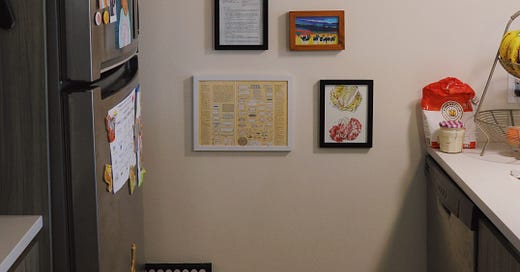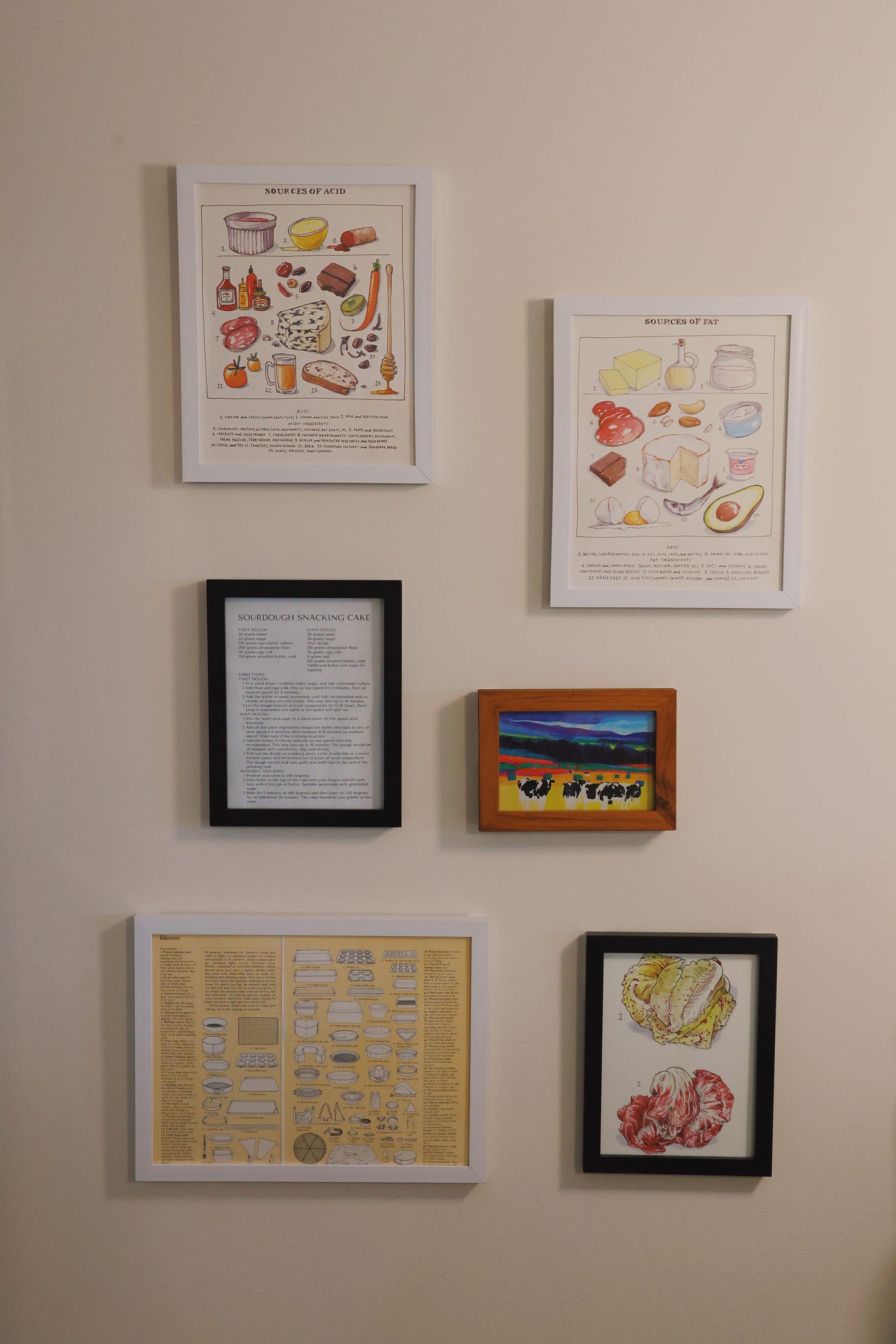A love letter to food forming in my kitchen
I draw inspiration from the flaky salt, peppery extra virgin olive oil, and pillowy bags of flour slumped over on the counter next to a jar of sourdough starter I’ve inevitably forgotten to feed.
I imagine my love for my kitchen to be similar to that of a writer who has crafted the perfect study with an antique desk, the coziest chair, and shelves of books from their favorite authors looming all around them.
I draw inspiration from the flaky salt, peppery extra virgin olive oil, and pillowy bags of flour slumped over on the counter next to a jar of sourdough starter I’ve inevitably forgotten to feed. A collection of cookbooks by the people who’ve influenced me looks out over the space: Bread by Jeffrey Hammelman, Salt, Fat, Acid, Heat by Samin Nosrat, Essentials of Classic Italian Cooking by Marcella Hazan, all three of Alison Roman’s cookbooks, and many more.
In the past year that I’ve lived in this apartment, I’ve only hung one picture in the kitchen: a print of a classic Woody Jackson watercolor in a frame from Manchester Woodcraft. It reminds me of my childhood trips to Vermont with my grandparents and is like a vision board for my dream to move there one day. I’m so attached to this particular item that, if all goes to plan, it will still be hanging onto the walls of my kitchen (in Vermont) when I’m an old woman.
The high value I place on my kitchen is perhaps why I have found it difficult to decorate.
In my search for inspiration for what else might be worthy of this sacred space, I went to my local library to explore the section where used books are sold for a few dollars each. I hoped to find a beloved cookbook that had been donated after an estate sale, some kind of hidden treasure that only a person who spends a lot of time thinking about food might appreciate. Among the $2 used cookbooks, I found Prue Leith’s The Cook’s Handbook from 1989. I got to know Prue Leith on The Great British Bake Off, a show that makes me happy just thinking about it.
The pages of her cookbook are filled with beautiful black-and-white sketches of ingredients, equipment, techniques, and more. Game birds, shellfish, cheeses, fruits, and knives are neatly drawn in field-guide fashion as though you’ll need to open this book to identify something you’ve found, which I guess makes sense before widespread access to the internet.
My eyes widened when I opened the section on bakeware: a spread of various vessels for creating everything from heart-shaped cakes to chocolate in the form of a chicken. It resembled a museum exhibit, showcasing the value we place on the celebratory aspect of baked goods.
captures this perfectly in her recently published cookbook, Sweet Enough, saying, “Sweet things, by nature, are a little frivolous, which is probably why I love them. Gestures that demonstrate joy can exist just to exist, a simple but valuable reminder that desire is as important as hunger, wants as important as needs.”This would be perfect for my kitchen, but I didn’t want to cut the pages, it felt disrespectful to damage the book beyond repair. Luckily, with a gentle bend of the spine, the brittle thirty-four-year-old glue released its hold, allowing me to effortlessly lift out the pages and slide them into a frame.
I completed the space with a few Wendy MacNaughton prints from Salt, Fat, Acid, Heat by Samin Nosrat, and a copy of one of my all-time favorite recipes: a sourdough snacking cake that I learned in a class at King Arthur Baking School in Norwich, Vermont from Heike Meyer of Brot Bakehouse.
Walking into my kitchen, some of the things that I hold as essential within myself are also represented outside of me: spread across the counters, tucked in cabinets, and now finally stuck to the walls. They act as a reflection of my love of food, something that makes me, me. I think I can see myself more clearly here than I do when I look in the mirror.





